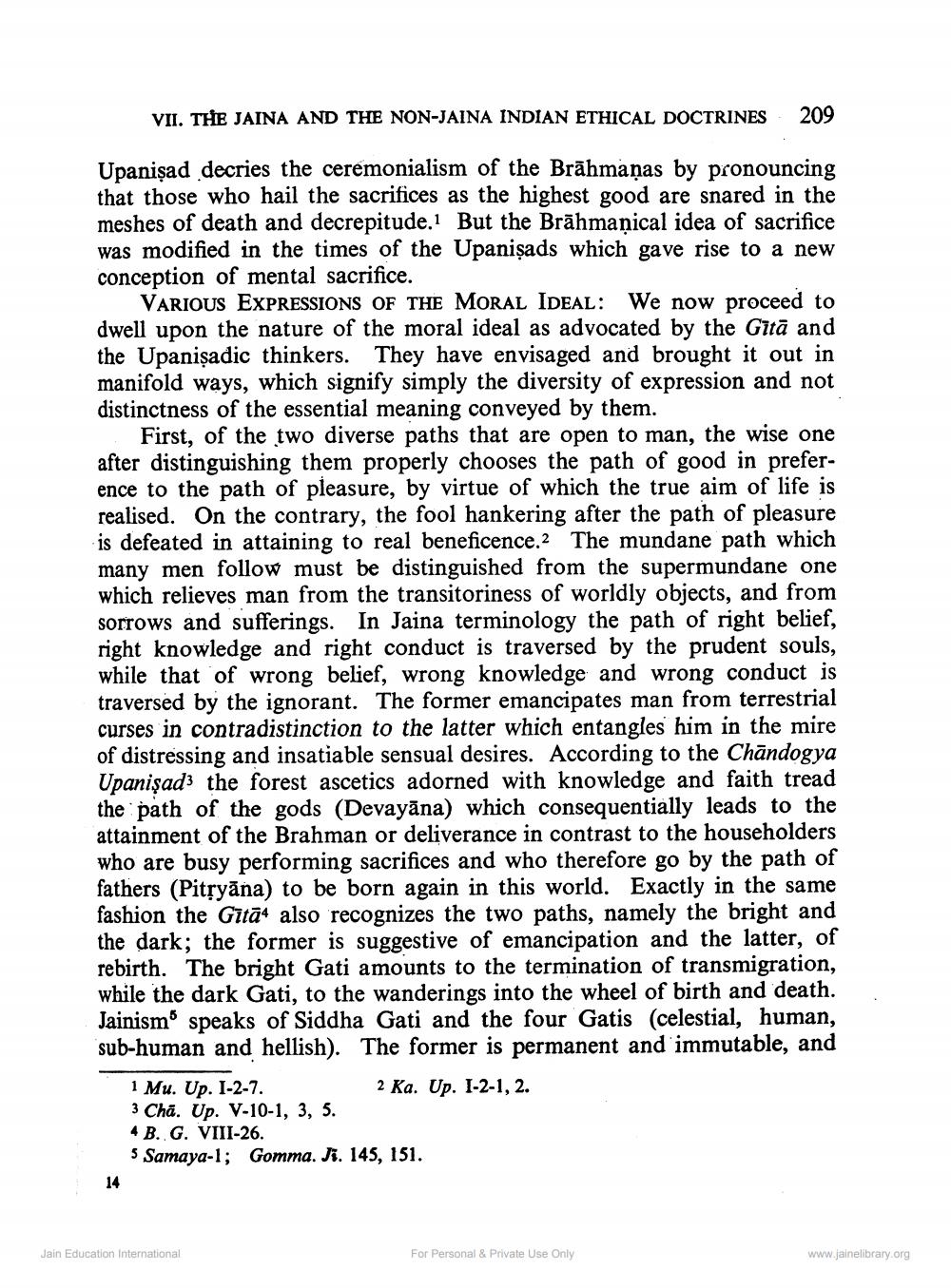________________
VII. THE JAINA AND THE NON-JAINA INDIAN ETHICAL DOCTRINES
209
Upanişad decries the ceremonialism of the Brāhmaṇas by pronouncing that those who hail the sacrifices as the highest good are snared in the meshes of death and decrepitude. But the Brāhmanical idea of sacrifice was modified in the times of the Upanişads which gave rise to a new conception of mental sacrifice.
VARIOUS EXPRESSIONS OF THE MORAL IDEAL: We now proceed to dwell upon the nature of the moral ideal as advocated by the Gitā and the Upanișadic thinkers. They have envisaged and brought it out in manifold ways, which signify simply the diversity of expression and not distinctness of the essential meaning conveyed by them.
First, of the two diverse paths that are open to man, the wise one after distinguishing them properly chooses the path of good in preference to the path of pleasure, by virtue of which the true aim of life is realised. On the contrary, the fool hankering after the path of pleasure is defeated in attaining to real beneficence. The mundane path which many men follow must be distinguished from the supermundane one which relieves man from the transitoriness of worldly objects, and from sorrows and sufferings. In Jaina terminology the path of right belief, right knowledge and right conduct is traversed by the prudent souls, while that of wrong belief, wrong knowledge and wrong conduct is traversed by the ignorant. The former emancipates man from terrestrial curses in contradistinction to the latter which entangles him in the mire of distressing and insatiable sensual desires. According to the Chāndogya Upanişads the forest ascetics adorned with knowledge and faith tread the path of the gods (Devayāna) which consequentially leads to the attainment of the Brahman or deliverance in contrast to the householders who are busy performing sacrifices and who therefore go by the path of fathers (Pitryāna) to be born again in this world. Exactly in the same fashion the Gītā4 also recognizes the two paths, namely the bright and the dark; the former is suggestive of emancipation and the latter, of rebirth. The bright Gati amounts to the termination of transmigration, while the dark Gati, to the wanderings into the wheel of birth and death. Jainism speaks of Siddha Gati and the four Gatis (celestial, human, sub-human and hellish). The former is permanent and immutable, and
1 Mu. Up. 1-2-7.
2 Ka. Up. I-2-1, 2. 3 Chā. Up. V-10-1, 3, 5. 4 B. G. VIII-26. 5 Samaya-1; Gomma. Ii. 145, 151.
Jain Education International
For Personal & Private Use Only
www.jainelibrary.org




